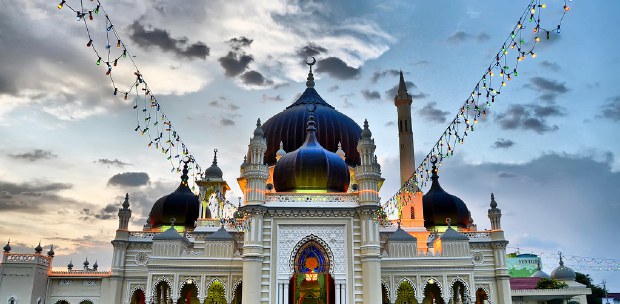Visiting shops offering vintage black-and-white photographs for sale is my most looked forward to leisure activity when in Melaka.
With its rich history, supported by a vibrant ethnic mix that epitomises centuries of culture and trade exchanges between the East and West, this United Nations Educational, Scientific and Cultural Organisation's world heritage listing is a treasure trove of period items, including prints that provide snapshots from the distant past.
EXPERIENCED GUIDE
Coming across several rare pre-World War 2 photographs of this historic urban centre during a recent visit eventually leads to a meet up with tour guide Shaukani Abbas, my go-to person for all things related to attractions in Melaka.
With experience of more than three decades guiding tourists, Shaukani's absorbing virtual Melaka tours, attended by countless armchair travellers like me, were like a breath of fresh air, especially during lockdowns. Our friendship has grown from strength to strength since then.

Friendly and always ready to lend assistance, Shaukani's eyes light up while scrutinising the precious images. While pointing out landmarks that exist until this very day, his pertinent comment on Pasar Besar Melaka piques my interest.
Demolished decades ago with Vedro Mall Melaka now standing on its foundations, this wet market used to be the focal point for Melaka residents, especially when major festivities like Hari Raya Aidilfitri were around the corner. Towards the end of each Ramadan, locals from as far away as Ayer Keroh, Tebong and Asahan made a beeline for this market in Kampung Jawa to make purchases for Hari Raya.
THREE-CENTURY OLD MOSQUE
Keen to show Melaka's rapid progress since the time when my photographs were taken, Shaukani takes me on an exhilarating drive through town. Starting from the vantage point at St John's Fort in Jalan Ujong Pasir, we make several stops before reaching Masjid Kampung Hulu. The surrounding area has changed beyond recognition. The verdant coconut groves in the images are all gone and in their place are modern buildings and wide thoroughfares.

Shaukani reveals that this revered place of worship is the third oldest Islamic religious site in the country and among the most beautiful mosques in Melaka. Built in 1728 by Datuk Samsuddin Arom, a Chinese-Muslim, with financial assistance from the Dutch East Indies Company, which held sway over the important regional entrepot at that time, Masjid Kampung Hulu has held dear to age-old traditions and steadfastly served the community for the past three centuries.
While highlighting eye-catching adornments like roof tiles and floor ceramics that were imported from China during the Qing Dynasty as well as two ancient Malay cannons at the main entrance, Shaukani explains that Samsuddin's presence in Melaka could be traced all the way to the time when a heated family dispute prompted his father, Arom, to leave China and seek a better future in the Malay Archipelago.

Fate had it that his ship capsized off the coast of Melaka, and he was said to have been rescued by a local muezzin. Finding safe shelter living with his saviour's family, Arom married the muezzin's daughter after embracing Islam and went on to be a successful businessman. He donated generously to the poor and made many land endowments to aid religious causes.
Following in his father's footsteps, Samsuddin continued to use his wealth for the betterment of others. His benevolence culminated in the endowment of a piece of land to build Masjid Kampung Hulu.
FLOATING MOSQUE
Our sojourn comes to a fitting end at Masjid Selat Melaka, which is one of the most modern mosques in the state. Officially declared open by then Yang di-Pertuan Agong Tuanku Syed Sirajuddin Syed Putra Jamalullail in November 2006, this stunning gold-domed landmark, which looks as if it is floating on the Melaka Straits during high tide, was built at a cost of RM10 million.

Constructed using a harmonious blend of Malay and Middle Eastern craftsmanship, its main architectural highlights include two eye-catching intersecting archways that lead to the main entrance. Panelled by beautiful stained glass, these key features contribute towards sustainability by doubling as sun-shading devices to keep the interior cool.

As the evening sky bursts into a myriad of colours during our walk back to the carpark, an illuminating beacon from the mosque's 30m-tall minaret serves as reminder that Masjid Selat Melaka is truly unique as it is probably the only mosque in the country that also functions as a lighthouse.
Enjoy your staycation in Melaka with Agoda Promo Code.




